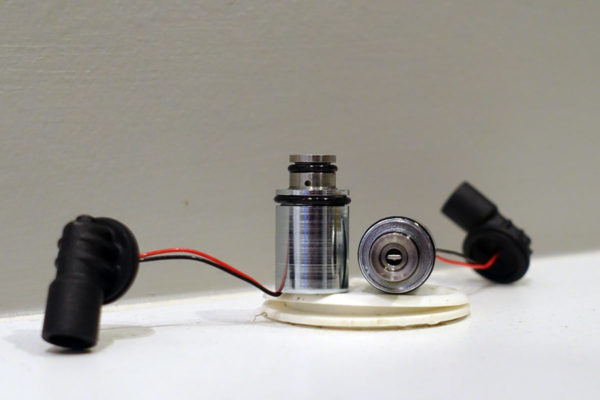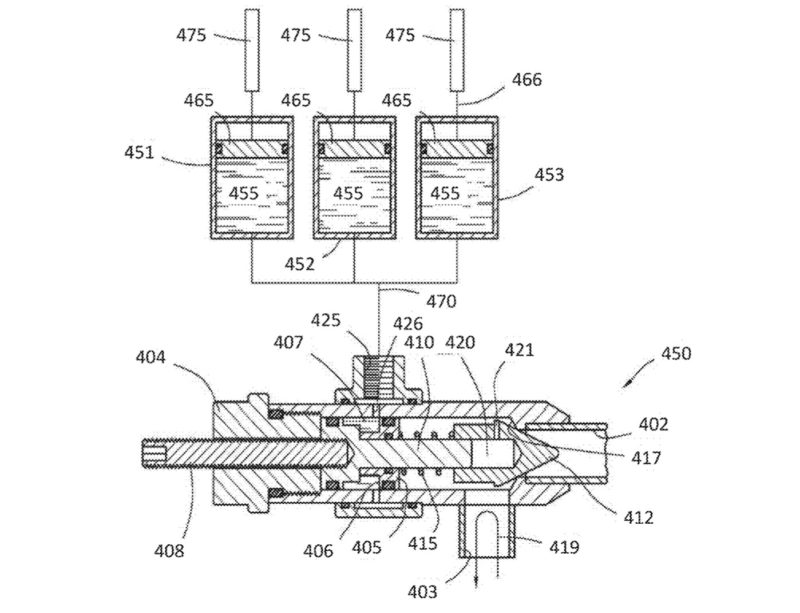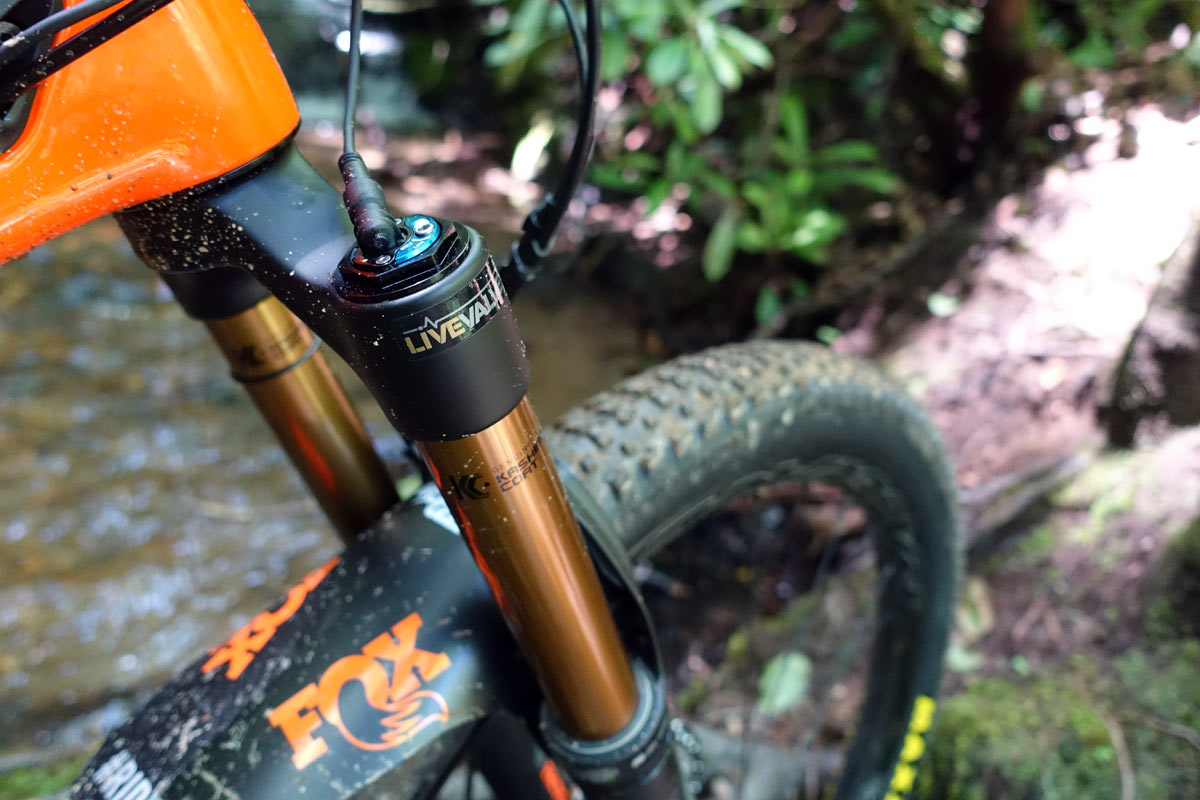This one covers two patents, one focused primarily on controlling a vehicle’s motion, and the other creating an electronically fully active (predictive, even!) suspension that makes Live Valve look prehistoric.
I’ll start with the easy stuff…
Why we need smart, electronically controlled suspension

Technically, Live Valve is a very basic compression damping adjustment that switches between “open” and “closed”. There’s no middle ground, but you can make some manual adjustments to how soft the Open mode is, and you can select between several preset programs.
The problem with this system (which is hardly a complaint, the Live Valve system is very impressive!) is that there’s no nuance. It can’t adapt to varied terrain, or differentiate between big and small or fast and slow impacts.
Admittedly, there is NO current mechanical damping system that can, either. Sure, there are High- and Low-speed damping circuits, but these are “dumb” passive systems that have to wait for an impact to start moving the suspension through it’s travel. By the time they’re doing something, the frame (your bike) and thus you have already felt some of that impact.
Electronically controlled “smart” suspension can do much better at minimizing the amount of impact acceleration transferred to bike and body. And Fox has two rather remarkable solutions in mind…
Fox’s Adjustable Suspension Dampers

The simpler of the two seems focused mainly on controlling body tilt (i.e. pitch & roll). This patent was an absolute bear to read, so I’ll summarize heavily: By putting an electronic sensor on the frame and suspension members (fork, and near the rear axle), Fox can detect impacts faster than any mechanical system, even when equipped with an Inertia Valve (remember their Brass Mass-equipped Terralogic forks?).
So far, that’s Live Valve, which uses a Latch Solenoid to open and close a port, thus adjusting oil flow through the compression damping circuit.
This latest patent filing adds some adjustability to that by allowing the system to also electronically control additional ports that move fluid in and out of a secondary chamber that adjusts pressure on the compression shim stack.
So, in addition to an Open/Close solution, it can also adjust the shim stack’s behavior in real-time based on impact forces. Or, also, based on body roll.
This means that if you brake hard, the sensor on the frame can detect the deceleration AND forward pitch, then firm up the fork to maintain a level bike. Accelerate hard and it can firm up the rear suspension. On four-wheeled vehicles, it can do the same to prevent body roll.
The sensors would work in tandem so that the system balances suspension action with frame stability. And, the front suspension can communicate to the rear, so it’s can be ready for the impact before it even reaches the rear tire. The goal being to maintain a level ride that minimizes any impact forces from reaching your body.
They also say that, because there are now both hydraulic and electronic/magnetic forces acting upon the system, it can open or close a valve in as little as 4ms, which is much faster than the ~20ms speeds of existing systems. Basically, it can react and adjust in real time.
If that sounds cool, it’s child’s play compared to…
Fox Active Valve is completely active suspension management

This patent is wild. It was first spotted on The Lunch Ride, check their story for more details and additional discussion of proposed app updates.
This one is a bit easier to illustrate, but it’s a far more advanced system. Basically, Active Valve uses additional sensors on the bike and components to communicate more information to the suspension’s control center.
With additional sensors on wheels, handlebar, stem, dropper post, and cranks, it’s able to use data on speed, cadence, power, your riding style, and more to provide the system with more information. They even mention transducers to detect piston rod velocity inside the fork and shock, so it knows how fast your suspension is compressing and rebounding.
All those extra data points let it more actively manage the suspension. A fast cadence or more watts suggests a sprint, so it could firm up the suspension. Dropping the seatpost indicates a descent, so it can open it back up. Too much acceleration at the handlebar means it may want to open up high speed compression a bit more. And so on.

Here’s how it could do that: Rather than a simple Open/Closed switch like Live Valve, the Active Valve concept uses one or more micro-reservoirs (452) to move fluid (455) in and out of a chamber (407) behind a piston (405). That piston presses against a spring (415) that presses against a needle (412) that moves in or out of the compression damping flow port (402).
By controlling the amount of fluid (455) going in and out of the chamber (407) with pistons (465) driven by electronically controlled pistons (465) and rods (475), they have granular control over that damping circuit…in real time, with full adjustment range anywhere between open and closed. An external adjustment (408) gives the rider control over the firmest position, so you can still tune the minimum damping setting.
And the patent suggests this could be done for any circuit…high, low, rebound, compression, etc. Meaning complete and total active electronic suspension control.
But wait, there’s more…
Predictive terrain sensing? Bike-to-Bike signaling?

They also mention terrain sensing sensors, ranging from lasers to radar to ultrasound. By pointing something a few feet in front of the bike, the suspension could know what’s coming in advance and adjust the damping before you ever hit it. Or drop into it…it would work for holes and negative space, too. It’s about as close to a true “hover bike” as we can get, until, you know, we actually have a hover bike.

And then there’s bike-to-bike communication, allowing the lead rider’s suspension to communicate to the rider behind them so their bike is ready for what’s coming, too.
Far fetched? Overkill? Ridiculous? Yes, but keep in mind Fox builds advanced Live Valve suspension for some very expensive motor vehicles (like the Ford Raptor and Polaris quads), and all of this technology is applicable there, too. The important thing to note is that mountain biking is the only sport that (currently, anyway, please don’t mess with this UCI!) that allows active suspension management in competition.
